markedly different effect when used with different synth patches, so it is worth experimenting
with various synth sounds as well. Above all, because sidechain processing is modifying time
parameters, the effect will be more or less interesting depending on the relative timings of the
synth patterns and Drum 1.
The “key” source for the sidechains is derived pre-fade; this means that if you turn the level of
Drum 1 right down in Mixer View, any sidechain processing enabled will continue to function
operate even though you can’t hear the drum any more. This is a feature which can be used
quite creatively!
Note that the Macro controls still function as “tweak” controls for the selected Synth in
Sidechain View.
THE FILTER KNOB
The entire audio output of Circuit – the sum of the sounds from all six tracks – is fed through a
traditional analogue-style lter section. The control for this is the large Filter knob
2
. The Filter
knob on most synthesisers is one of the key performance controls and can be used to radically
change the overall sound: Filter on Circuit works in a similar way.
The Filter encompasses both low-pass and high-pass types. A high-pass lter removes low
frequencies (bass) from the output and a low-pass lter removes high frequencies (treble).
Circuit’s Filter knob controls a low-pass lter when you turn it anticlockwise from the centre
position and a high-pass lter when you turn it clockwise from the centre position. Note that the
control has a detent in the centre – in this position, no ltering takes place and the LED below
the knob is dimly lit blue. As you turn the knob clockwise, you’ll hear the kick drums and lower
notes disappear leaving you with a much thinner sound; in the opposite direction, the high
notes disappear rst, leaving you with a mufed sound. The LED changes to white when either
lter type is active, with the brightness increasing as the control is turned.
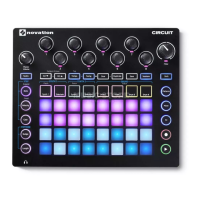
 Loading...
Loading...
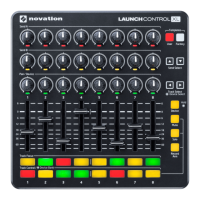
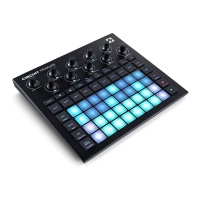
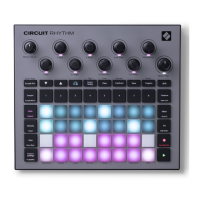
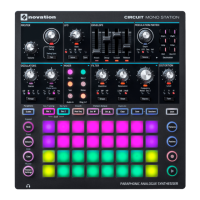
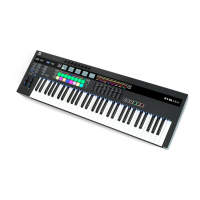
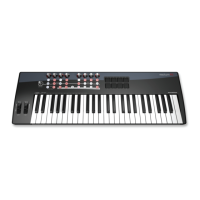
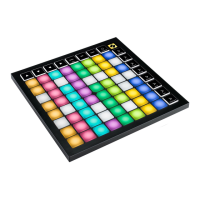
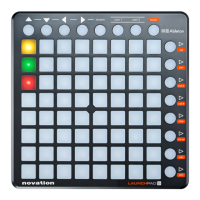
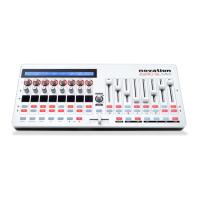
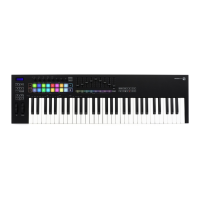
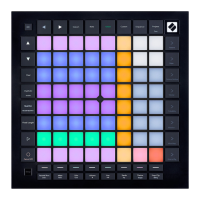
![Preview: Novation Launchpad Mini [MK3]](https://data.easymanua.ls/products/284351/200x200/novation-launchpad-mini-mk3.webp)